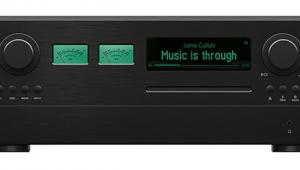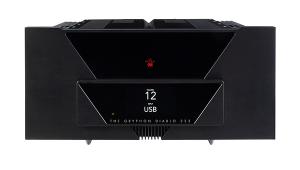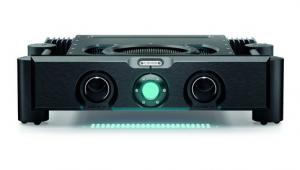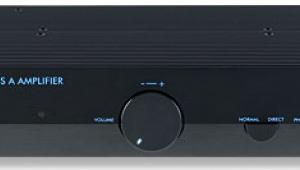Chord Anni Desktop Amplifier
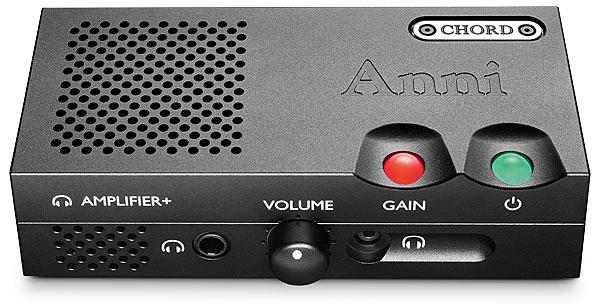
 Just 16cm wide, the latest integrated amplifier from Chord Electronics is truly tiny, but the levels of performance it offers elevate it way beyond its apparent novelty status
Just 16cm wide, the latest integrated amplifier from Chord Electronics is truly tiny, but the levels of performance it offers elevate it way beyond its apparent novelty status
The Chord Electronics Anni, selling for £1195, isn't the company's first compact amplifier – that honour goes to the £2900 TToby [HFN Feb '17], designed as a partner for the Hugo TT 2 DAC/pre/headphone amp [HFN Dec '15]. But the Anni is smaller, at just 16cm wide and 4.25cm tall, much lighter at 625g, and conceptually different from the TToby.
In practice, its dimensions are governed by its partnership with the compact Qutest DAC [HFN Nov '18] and the Huei phono stage, its claimed power output a tenth of that on the TToby's spec sheet and described as a 'Desktop Integrated Amplifier', not just a power amp.
Split Personality
It's also a headphone amp – although, as we'll see, it could perhaps more correctly be considered as a headphone amp also able to drive speakers, rather than vice versa. The Anni is also a little unusual for not having built-in digital-to-analogue conversion, but then the matching Qutest serves this role, without a headphone amp, so the two have been designed to complement each other as a £2445 all-in-one solution.
Reinforcing this union between the Anni, Qutest and Huei is the availability of a little desk-stand, the QSS (Qutest Stand System), selling for £245 and made of the same aerospace-grade aluminium that encases products across the Chord Electronics range. One QSS is required for each product you want to stack, so tidying a Qutest and Anni together will add £490, or £735 to also rack a Huei phono stage.
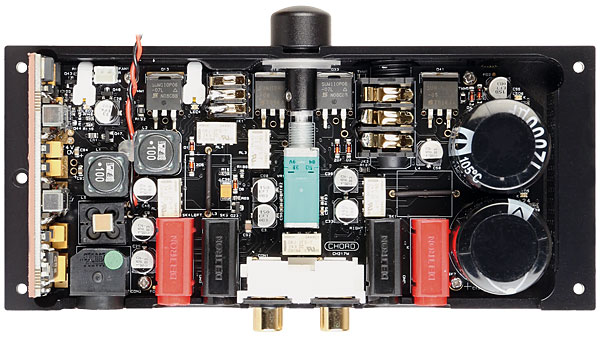
And there's another element of the Anni design created for this miniature system, for while the amplifier is powered by an offboard 15V switchmode supply, an extra socket on the Anni's rear panel allows it to supply a 12V feed to a Huei phono stage (the Qutest DAC is powered via a 5V micro-USB port). Thus, a little cable clutter is minimised across this very compact back panel real estate!
Those familiar with Chord's way of thinking will find nothing to scare the horses in the way the Anni is operated. A pair of the brand's internally-lit spherical controls are provided, one for power on/off and the other offering a gain boost, but only to the speaker outputs, if required. Blue illumination of the control indicates low gain, and red high. That's almost the only switching the user need worry about, beyond selecting between the two sets of line inputs, which is just a matter of pushing the volume control. An LED ring around the knob shows the input in use – again, blue for input 1 and red for 2.
Keeping It Simple
Both 6.35mm and 3.5mm headphone outputs are provided on the front panel, along with 4mm speaker sockets to the rear: either or both headphone sockets can be used, but there's none of the fancy balanced connections found on many another DAC/headphone amp. Similarly, the volume control is a simple mechanical device – well, apart from that integrated source selection – with no need for motorisation or any other frills. After all, there's no remote control provision, as this is a desktop product, and therefore intended to be used within easy reach.
Plugging in a pair of headphones will mute the speaker outputs and activate the headphone sockets, at least after a few seconds during which low gain is selected should you be running into speakers in high-gain mode. Disconnecting the headphone plug(s) reverts the Anni to its speaker mode. The 'power ball', which glows cyan – light blue to you and me – when the Anni is driving speakers, turns green when in headphone mode.
That's about it, and the technical information Chord supplies about the Anni is almost as simple as its operation. We're told that the power output is 10W/8ohm and the frequency response is 5Hz-60kHz (–3dB), while the amplification within 'benefits from the company's proprietary ULTIMA circuit topology', as used in Chord's high-end power amps, and 'offers Chord Electronics' recently announced dual-feed-forward error-correction circuit topology whether using headphones or compact loudspeakers'.





